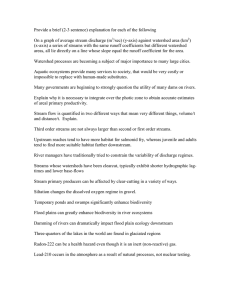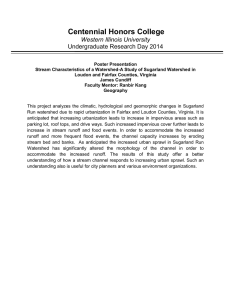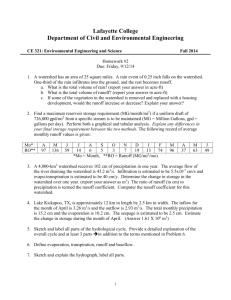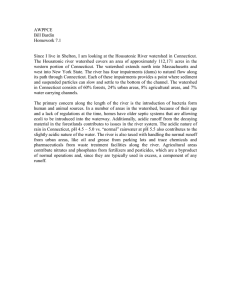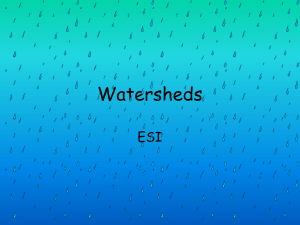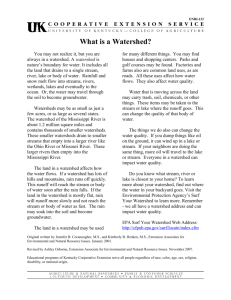Lesson Four: The Effects of Land Use on Watersheds simulation
advertisement
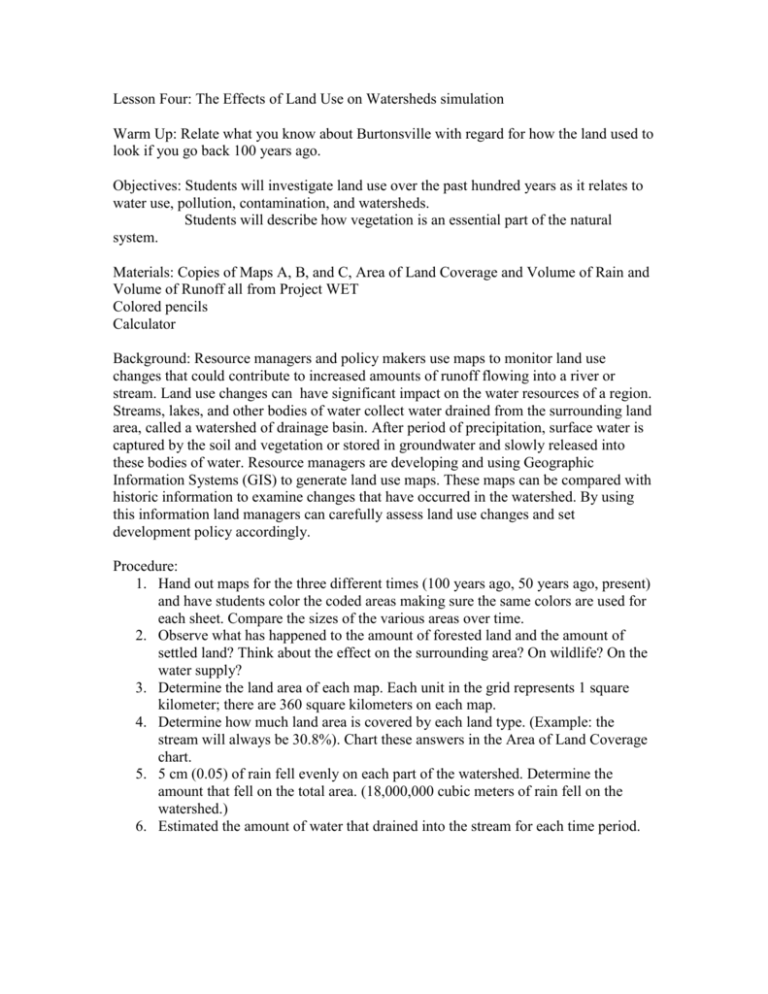
Lesson Four: The Effects of Land Use on Watersheds simulation Warm Up: Relate what you know about Burtonsville with regard for how the land used to look if you go back 100 years ago. Objectives: Students will investigate land use over the past hundred years as it relates to water use, pollution, contamination, and watersheds. Students will describe how vegetation is an essential part of the natural system. Materials: Copies of Maps A, B, and C, Area of Land Coverage and Volume of Rain and Volume of Runoff all from Project WET Colored pencils Calculator Background: Resource managers and policy makers use maps to monitor land use changes that could contribute to increased amounts of runoff flowing into a river or stream. Land use changes can have significant impact on the water resources of a region. Streams, lakes, and other bodies of water collect water drained from the surrounding land area, called a watershed of drainage basin. After period of precipitation, surface water is captured by the soil and vegetation or stored in groundwater and slowly released into these bodies of water. Resource managers are developing and using Geographic Information Systems (GIS) to generate land use maps. These maps can be compared with historic information to examine changes that have occurred in the watershed. By using this information land managers can carefully assess land use changes and set development policy accordingly. Procedure: 1. Hand out maps for the three different times (100 years ago, 50 years ago, present) and have students color the coded areas making sure the same colors are used for each sheet. Compare the sizes of the various areas over time. 2. Observe what has happened to the amount of forested land and the amount of settled land? Think about the effect on the surrounding area? On wildlife? On the water supply? 3. Determine the land area of each map. Each unit in the grid represents 1 square kilometer; there are 360 square kilometers on each map. 4. Determine how much land area is covered by each land type. (Example: the stream will always be 30.8%). Chart these answers in the Area of Land Coverage chart. 5. 5 cm (0.05) of rain fell evenly on each part of the watershed. Determine the amount that fell on the total area. (18,000,000 cubic meters of rain fell on the watershed.) 6. Estimated the amount of water that drained into the stream for each time period. MAP A Post Lab Discussion Questions: 1. Describe the changes in the land over the 100 years. 2. Summarize how changes in the land affected the quantity and quality of runoff in the watershed 3. Which map represents the watershed that is able to capture and store the most water? Why? 4. How do land use practices in the community affect water discharge in the watershed? What kind of areas contribute to or reduce storm runoff? 5. What problems could arise if water runs quickly over surface material, rather that moving slowly or soaking in? 6. How might the water quality of the stream be affected by changes in the watershed? 7. Do you think the amount of runoff would increase or decrease with time. Why? 8. How can local land practices be altered to improve the situation? Credit: Project WET
